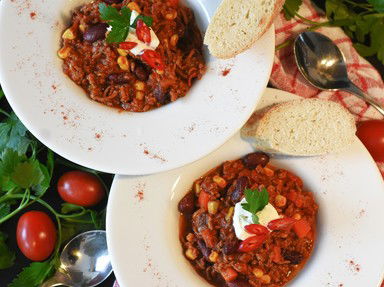Quiz Answer Key and Fun Facts
1. Chile relleno is a Pueblan dish in which a pepper is stuffed with cheese and other ingredients, then typically battered and fried. Underneath is a delicious sauce, usually tomato-based. What kind of chile pepper is most often used for this dish?
2. Don't confuse it with a musical group. This Mexican soup is made with tripe (cow's stomach) and a red chile or white broth. What soup is it?
3. One wouldn't eat the corn husk wrappers found here, but you would find within which millennia-old treat made with a corn-based "masa" dough?
4. Birria is a meat stew originating from the Mexican state of Jalisco. The flavor is so popular that it was incorporated into tacos, quesabirrias, and even ramen. While beef is a popular choice, what was the traditional meat used in this dish?
5. Cucumber, chiles, red onion, and lime juice are often used to flavor the Mexican dish known as aguachile. What ingredient is the star of this dish?
6. Often paired with delicious churros, champurrado is a Mexican "atole" beverage thickened with masa or corn flour. Which of these ingredients gives this hot beverage its dark color?
7. Pozole is a Mexican soup that can be prepared in a variety of different ways, but the common ingredients across them all are a hominy base (a type of corn product) and usually some kind of meat. Which of these is NOT a traditional style of pozole?
8. If you wanted to order some Mexican street corn, which of these words would you look for?
9. A legacy of France's short-lived occupation of Mexico, a "mollete" is a type of open-faced sandwich that utilizes baguette-type bread. Besides bread and cheese, which of these ingredients defines this dish?
10. "Pan de muerto" is a sweet bread traditionally baked in celebration of Día de Muertos and flavored with sugar, anise, or orange flower water. What are the shapes at the top of the bread meant to represent?
Source: Author
trident
This quiz was reviewed by FunTrivia editor
agony before going online.
Any errors found in FunTrivia content are routinely corrected through our feedback system.
